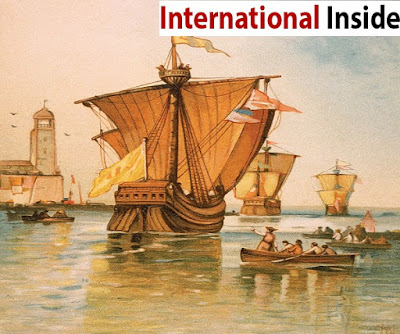Interesting Facts About Christopher Columbus
The problem with facts about Christopher Columbus is that
there are less of them than you might imagine. Much of what you may have
learned in school is being revised as historians continue to explore the life
of this famous explorer. Even things as simple as his nationality are open for
debate.
We do know that Columbus successfully petitioned the king
and queen of Spain to receive financing for a trip west across the Atlantic
Ocean. It was already common knowledge that the Earth was round by this point,
so there is no truth to the persistent rumor that Columbus proved the world is
round. Instead, by using the shape of the Earth, Columbus assumed that he could
reach India and their valuable spices, teas and cloth by sailing west.
Voyages to India at this time required either a long
overland trip across Europe and the Middle East or a long southern trip by ship
around the southern tip of Africa. Both paths had their inherent dangers. The
overland trip risked being attacked by various bandits and warlords. Going by
sea risked dangerous weather and pirates.
Also, it cannot be said that he “discovered” the New World.
Millions of people lived in the Western Hemisphere before he arrived. Sailors
from Iceland visited North America hundreds of years before Columbus set sail.
Instead, Columbus is now known for opening the New World to
trade, exploration and conquest for the European powers. He had a contract with
Spain that allowed him to keep ten per cent of any riches he discovered, along
with a noble title and governorship of the lands he found.
He kept detailed records of his voyages which discuss not
only the wildlife he encountered and the moods of his crew, but also the
reasons why he felt he could enslave the native people. He not only enslaved
them to build settlements in the Caribbean but also sent 500 slaves to the
queen. She rejected his gift as she believed that the people found in the New
World were Spanish subjects and could therefore not be made slaves.
His first attempt to form a settlement at Hispaniola ended
when he returned on his second voyage to find that the natives had completely
destroyed it. He then left his two brothers to rebuild with some of his crew
and hundreds of native slaves. On his third trip, he found that the colonists
of Hispaniola had staged a bloody revolt over the brutality of his brothers.
The Spanish government was forced to send someone else to govern the colony.
The native population after being enslaved and forced to
search for gold and work on plantations was nearly wiped out. Within sixty
years of Columbus’ first voyage, the native Taino population was reduced from
as many as 250,000 people to only a few hundred. Columbus was arrested and
returned to Spain in chains.
Columbus managed to avoid persecution for the most serious
charges against him but he was stripped of the titles he had received for his
explorations and discoveries.
He made one more trip to the New World but storms and angry
natives forced him to return home empty-handed. He died in Spain just four
years later.
For More Info: https://www.internationalinside.com/history/christopher-columbus-great-hero-or-arch-villain/



Comments
Post a Comment